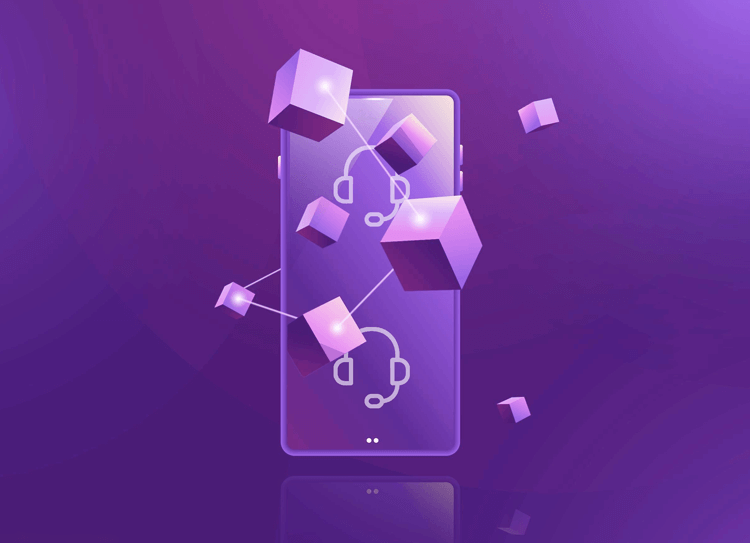Top 20 Customer Pain Points with Examples and Solutions
Discovering and addressing customer pain points is essential for any business aiming to excel in customer satisfaction and retention. These pain points include the difficulties and frustrations customers encounter when engaging with products or services. They can directly influence their overall experience and perception of a brand.

In this guide we look into the heart of these challenges, offering detailed real-world examples and specific solutions designed to enable businesses to deliver top-notch customer experiences.
What are Customer Pain Points?
It is important to identify the different types of customer pain points. These pain points can generally be categorized into four main types:
- Service Pain Points: These are related to the customer's experience with your service, such as long wait times, bad agent attitudes, or a general lack of support.
- Product Pain Points: These involve issues with the product itself, such as quality problems, lack of features, or difficulty in use. It can include pricing and costs as well.
- Process Pain Points: These are related to the customer's journey with your business, including complicated checkout processes, confusing navigation on your website, or cumbersome account setup.
- Emotional Pain Points: These are about how the customer feels when interacting with your brand, such as feeling unvalued, frustrated, or anxious.
How to Identify Customer Pain Points
Determining customer pain points is a critical step in improving the customer experience. Here are some effective strategies to uncover these issues:
- Customer Surveys and Feedback: Regularly gather feedback through surveys, reviews, and direct customer interactions. These can provide valuable insights into common pain points.
- Social Media Monitoring: Monitor social media channels where customers may voice their concerns or frustrations. This can be a rich source of real-time feedback.
- Sales and Support Team Insights: Your front-line employees, such as sales representatives and customer support staff, often have firsthand knowledge of the issues customers face. Regularly debrief these teams to uncover recurring pain points.
- Analytics and Data: Analyze customer behavior data, such as website navigation patterns or purchase histories. These can help identify areas where customers encounter difficulties.
- Competitor Analysis: Observe common complaints or issues raised by customers of competitors. This can also highlight potential pain points in your own offerings.
Watch Our Video on How to Identify and Address Customer Pain Points
20 Important Customer Pain Points with Examples and Solutions
-
Long Waiting Times
What is it? Customers often face long waiting times in various contexts, such as retail lines, call center queues, or service appointments.
Example: Customers waiting for over 30 minutes on hold to speak with a customer service representative. As time passes, customers lose patience. Waiting 30 minutes or more may feel much longer to a customer that has a pressing issue.
Solution: Implement a queue management system, offer callback options, or increase staffing during peak times to reduce wait times and improve customer satisfaction.
-
Poor Customer Service
What is it? Poor customer service can manifest as unhelpful, rude, or indifferent interactions with staff, leading to customer frustration and dissatisfaction.
Example: A customer service representative providing incorrect information or showing a lack of empathy towards a customer's issue. For example, an agent who does not apologize on behalf of the business for the issue at hand, or accidental phone disconnects without a call back.
Solution: Invest in comprehensive training programs focusing on communication skills, product knowledge, and empathy. Regularly monitor and evaluate customer service performance to ensure consistent quality. This can be done by reviewing call recordings on a regular basis, and specifically those related to recent customer complaints.
-
Complicated Website Navigation
What is it? A website that is difficult to navigate can deter customers from finding the information or products they are after, leading to a frustrating experience overall.
Example: A customer visits an e-commerce website in search of a specific product they saw advertised. Despite their efforts, they find it challenging to locate the item due to unclear product categorization and a lack of intuitive search functionality. Additionally, when they attempt to apply a discount code at the checkout page, they encounter issues with the code's validity.
Solution: Simplify the website's layout. Ensure clear and logical navigation and product categories. Provide a search function to help users find what they need quickly and efficiently.
If you offer discount codes for newsletter sign-ups or promotions, be sure to test them in advance. Then continue testing on a regular basis to ensure good working order.
-
Product Quality Issues
What is it? Customers expect products to function as advertised and to be free of defects. Quality issues can lead to returns, as well as irreparable damage to a brand's reputation.
Example: The BlackBerry Storm smartphone, released in 2008, is often seen as one of the key moments in the former tech giant's fall from grace. Research in Motion, the company responsible for BlackBerry, faced significant backlash due to its glitchy software and unresponsive touchscreen, leading to widespread customer dissatisfaction, mass returns and a tarnished brand image.
Solution: Implement rigorous quality control measures at every stage of product development to prevent such issues. It can be critical to ensure you have proper support, repair, and replacement protocols in place to "stop the bleeding" when and if major product issues arise.
-
Inadequate Product Information
What is it? Customers need clear and detailed information to make informed purchasing decisions. Inadequate or misleading product descriptions can lead to confusion and ultimately a lost sale.
Example: A customer purchases a smartwatch online, only to find that its battery life is significantly shorter than what was suggested in the product description, leading to frustration and a potential return.
This can also be important in the grocery industry. Food items that lack proper ingredient listings, or do not highlight key product points on the packaging, such as "gluten-free" or "high in fiber," could lead to a lost sale.
Solution: Provide comprehensive and accurate product information through detailed descriptions, specifications, and user guides to help customers make informed decisions and reduce the likelihood of dissatisfaction.
If there are specific things to highlight about your product, ensure they are front and center. An example might be noting them in a different colored box at the front of the package.
-
Shipping Delays
What is it? Timely delivery is a crucial aspect of the online shopping experience. Customers want their packages as soon as possible. Shipping delays can lead to frustration and create hits to brand loyalty.
Example: A customer orders a gift for an upcoming birthday party. Your website notes or guarantees a 2-3 day shipping time. While the customer orders with enough lead time, your team either takes too long to ship or the carrier temporarily loses the package.
In any case, the customer must now arrive at the birthday party empty handed, or go out and find an alternative on short notice. While shipping delays can be unpredictable, a business can take certain steps to ensure these instances are mitigated. These delays become more critical when they involve items like medicine or food.
Solution: Use a trusted shipping partner with guaranteed delivery timeframes, especially if you are making mention of specific timelines on your website.
If you work for a larger organization, you might consider a private courier service, or investing in your own delivery person. The latter example is similar to the Amazon model, that utilizes their own delivery vehicles and employees to fulfill same/next day shipping for Prime members.
-
Hidden Fees
What is it? Transparency in pricing is critical for building trust with customers. Hidden fees, such as unexpected shipping charges or service fees, can result in a sense of betrayal.
Example: A common example is concert tickets purchased via Ticketmaster. While the upfront cost to see your favorite band live might only cost you $50, once you get to checkout, there are often service fees, delivery fees and other "junk fees" added to the final cost. While these fees won't exceed the cost of the ticket, they can be surprising and frustrating to say the least.
The same can be said for budget airlines like Frontier and Spirit in the United States. While their fares can be ultra cheap compared to carriers like United and Delta, they do charge for every little add-on — seat selection, carry-on baggage, food and drink, etc. Once you add all the common elements normally included with a fare from United, the savings are negligible at best.
Solution: While the companies used in the example above do disclose their added fees on their website, it isn't always easy to find until you get to the check-out phase. To maintain trust and transparency with your clients, you should clearly communicate all potential fees upfront and ensure that the total cost is visible before the final payment step.
-
Outdated Technology
What is it? Utilizing outdated technology within your business can become an outbound issue for your customers in the form of inefficiencies, website compatibility issues, and an overall subpar customer experience.
Example: A company's website uses an outdated platform, resulting in slow load times and a lack of mobile compatibility. We know that customers do not like to wait long for pages to load before they bounce.
If your business is eCommerce focused, invest in a website that uses efficient script to improve user experience. This is especially for those customers accessing the site on smartphones.
Solution: Invest in modern technology and keep tabs on the newest industry updates (we know, this can feel like a full time job in itself)! Conducting regular program updates can also ensure you're always running the best version of each program.
-
Limited Payment Options
What is it? A lack of diverse payment options can be frustrating for customers in this economy. Flexibility to use credit cards, digital wallets and payment plans is critical.
Example: A customer wants to use a digital wallet for an online purchase but finds that the e-commerce site only accepts credit cards.
In another instance, a customer wants to make a large appliance package purchase. While they see the appliances as a necessity, paying for the entire package upfront might make for a tricky financial situation in the coming weeks. They prefer to use a payment plan, like those offered by Uplift or Sezzle to split the payment into 4 equal payments, taken out monthly. Not offering this option can create lost sales. This is especially true if you are in the business of selling big ticket items like appliances and vacation packages .
Solution: Offer a variety of payment methods, including credit cards, digital wallets, bank transfers, and even cryptocurrency. This can cater to a broader range of customer preferences and enhance the checkout experience.
If you sell big ticket items, be sure to offer the option of a payment plan. Sometimes, these payment plans can be the difference in having a customer feel confident enough to follow through on the purchase.
-
Lack of Personalization
What is it? Customers increasingly expect personalized experiences that cater to their individual preferences and needs. A lack of personalization can make customers feel like a "number," undervalued and lead to disengagement.
Example: A customer receives generic marketing emails that are irrelevant to their interests, leading them to unsubscribe from the mailing list.
Solution: Implement personalized marketing strategies, such as targeted emails based on customer behavior and preferences. This can enhance customer engagement and loyalty.
-
Difficult Return Policies
What is it? Complicated and restrictive return processes can deter customers from making purchases in the first place. It can also damage the trust and loyalty of those who purchase from you.
Example: A customer finds they need to source out and pay for their own return shipping label and drive it to the shipping company. This makes the return process for an online purchase to be overly complex and restrictive. On top of this, the customer will not get a refund, they only receive a store credit, minus a 10% restocking fee.
Solution: Simplify return policies and make the process more customer-friendly to enhance the shopping experience and encourage repeat business. Build a returns portal on your website — offer your customers pre-paid shipping labels, and full refunds. If customers know that this is an option, they will be more likely to buy from you in the first place.
-
Security Concerns
What is it? Customers are increasingly concerned about the security of their personal and financial information. Security breaches can lead to a loss of trust and legal troubles for the business.
Example: A customer hesitates to make an online purchase after hearing about a recent data breach on an e-commerce site, fearing their payment information might be compromised as well.
Solution: Implement robust cybersecurity measures, such as encryption and secure payment gateways, and transparently communicate these measures to customers to help alleviate security concerns and build trust.
-
Inconsistent Product Availability
What is it? One of the common customer pain point examples is inconsistent product availability. Customers expect products to be available when they need them, and frequent stockouts can be frustrating leading customers to seek out alternate vendors.
Example: A long-time customer can no longer find office attire in their desired size. Your shop is consistently sold out of small and medium. Your customer often comes in to dress for an upcoming meeting or conference and they do not have the time to spend running around to different stores. You have lost their confidence, and they will look at other tailors going forward.
Solution: Improve inventory management and implement demand forecasting to help ensure consistent product availability to meet customer expectations.
-
Unclear Terms and Conditions
What is it? Transparency is critical in building trust with customers. Unclear or hidden terms and conditions usually become one of the most notable examples of customer pain points.
Example: Cell phone providers are often guilty of keeping many of their terms and conditions buried deep into their sitemap.
For example, a customer signs up for a phone plan that has 100GB of high-speed data allowance, including North America-wide roaming. The customer takes a trip to Canada only to realize that after using 10GBs of data abroad, the speeds are being throttled! The customer was under the impression that their allowance was at max speed. The throttling parameters are present, but buried deep within the carrier's terms and conditions. This becomes very inconvenient for the client while traveling, using maps and streaming live TV.
Solution: Ensure that terms and conditions are clearly communicated, easily accessible, and written in plain language to help prevent misunderstandings. If a customer is signing up for a plan that includes roaming built into the cost, they are probably under the assumption that they can take advantage of their full allotment of features.
-
Intrusive Marketing
What is it? Overly aggressive or poorly targeted marketing efforts can annoy customers and damage their perception of a brand.
Example: A customer opts-in to your email marketing, but you send emails daily, featuring content or items that are not related to their preferences.
Solution: Implement permission-based marketing strategies to respect customer preferences and enhance the effectiveness of marketing efforts. Focusing on dynamic content within emails can create a hyper-focus on specific interest groups.
-
Complex Account Setup
What is it? A lengthy or complicated account registration process can deter customers from completing a purchase. Customers may opt for a 'guest checkout,' but in turn miss out on the benefits of an account registration.
Example: A customer attempting to create an account on an e-commerce website becomes frustrated with the multiple steps and required information. They finally input all the information and receive an error message without explanation. This leads them to abandon their cart or program set-up.
Solution: Simplify the account creation process with minimal steps and clear instructions. If information is entered incorrectly, there should be a clear indication for how a user can make amendments. Including a guest checkout option is also important as to avoid a complete loss of sale.
If the account registration is not directly related to a sale, support options, like a live chat or phone call back option should be readily available for potential clients that become stuck.
-
Ineffective Communication
What is it? Clear and timely communication is essential in maintaining customer trust and satisfaction. Ineffective communication at certain points of the customer journey can lead to confusion, frustration, and a sense of neglect.
Example: A customer experiences a service interruption on their mobile device. Calls and text messages are dropping. The customer checks social media, the news and other channels for an update from the carrier, but does not come across any updates or explanations.
For services like telecommunications, this could be a critical situation, especially for seniors and other individuals who require access to a reliable line of contact. Without knowing what is going on, people can feel helpless as they do not have another way to contact help, run their businesses or communicate with loved ones.
Solution: Establish proactive communication channels and provide timely updates during service disruptions. In the example of a telecommunications provider that primarily provides text and call service, they may want to ensure that service updates can be found on social media or on their website.
-
Limited Customer Feedback Channels
What is it? Providing customers with easy ways to give feedback is important for continuous improvement. Limited feedback channels can make customers feel unheard and undervalued.
Example: A customer wants to provide feedback about a recent negative purchase experience but finds no straightforward way to do so on the company's website, leading to a missed opportunity for the business to learn and improve.
Solution: Establish multiple feedback channels, such as surveys, social media, and dedicated customer support lines. This can help businesses gather valuable insights and demonstrate a commitment to listening to their customers.
On your "Contact Us" page, ensure there is an option for feedback/complaints. Categorizing your contact types will also be helpful for your employees and end of quarter/year reviews of performance.
-
Overcrowded Physical Spaces
What is it? While our attention has been on eCommerce thus far, let us switch gears for a moment. In a physical retail or service environment, overcrowding can lead to an overwhelming experience (in a negative way), including longer wait times.
Example: Customers visiting a popular retail store during a black Friday event find it overcrowded. This makes it difficult to move around, browse products, or receive prompt assistance. The business can find it difficult to manage security as well.
Solution: Implement crowd management strategies, such as regulating store entry, optimizing space usage, and providing clear signage, to help improve the customer experience in physical spaces.
-
Lack of Sustainability Practices
What is it? Increasingly, customers are concerned about the environmental impact of the products and services they use. A lack of sustainability practices can deter environmentally conscious customers.
Example: A customer chooses not to purchase from a brand after discovering that it uses non-recyclable packaging materials, contributing to environmental waste.
Solution: Implement and communicate sustainable business practices, such as using eco-friendly materials and reducing carbon emissions, to attract and retain customers who have the environment in mind.
The Bottom Line: Turning Customer Pain Points into Opportunities for Growth and Loyalty
Addressing customer pain points is not just about resolving issues; it is about transforming these challenges into opportunities for sales growth and customer loyalty.
As demonstrated, there are many areas which can potentially set off your customers. Whether they be first time buyers or loyalty members, many of the pain points discussed in this post apply to various customer-types alike.
Reviewing your response to each of these instances (and re-checking at different intervals throughout the year) can be a good first step in guaranteeing customer satisfaction.
Giva Can Help You With Customer Pain Points
Giva's Customer Service Software in the Cloud is a powerful tool in this endeavor.
Giva empowers businesses to provide exceptional customer service efficiently with these features:
- An internal knowledge base for employees to reference past customer pain points and resolutions
- A customer self-service portal for round-the-clock access to resources
- Automated task and ticket workflows
- Tsunami Tickets™ for linking related tickets during larger issues
- Customizable service desk instances for various departments
These tools not only streamline the support process but also enable customers to find solutions independently, reducing the time and effort required to resolve issues.
Experience the difference with Giva by signing up for a free trial today and take the first step towards transforming your customer service experience from the inside out.





